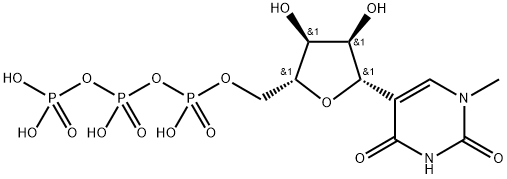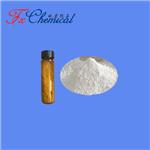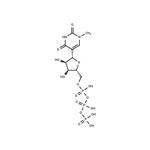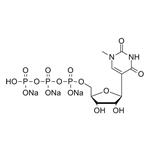N1-Methyl-Pseudouridine-5'-Triphosphate is a colorless to slightly yellow.
N1-Methyl-Pseudouridine-5'-Triphosphate is a solution in water.
N1-Methyl-Pseudouridine-5'-Triphosphate, also known as N1-Methylpseudouridine-5'-Triphosphate, N1meΨTP, m1ΨTP, or 1-Methyl-PseudoUridine Phosphoramidite, is a modified NTP for incorporation into messenger RNAs (mRNA) using T7 RNA Polymerase. Incorporation of N1-Methylpseudouridine can reduce the immunogenicity of the resulting mRNA. In addition, the free form of the compound is prone to instability; it is advisable to consider the stable salt form (N1-Methylpseudouridine-5′-triphosphate trisodium) that retains the same biological activity.
1-Methylpseudouridine-5'-triphosphate Sodium Salt is a salt analogue of 1-Methylpseudouridine-5'-triphosphate, which can be used to optimize the cardiac delivery of modified mRNA
The substitution of U with N1-Methyl-Pseudouridine-5'-Triphosphate (m1Ψ) not only bypasses immune response induced cytotoxicity, but also substantially enhances the effectiveness of both types of switches. The m1Ψ substitution induced higher protein expression of mRNA than other modified bases, allowing clearer detection of signals and better fold-change between ON and OFF states of the switches. In addition, the m1Ψ substitution enhanced the sensitivity and performance of synthetic RNA circuit composed of both miRNA- and RBP-sensing switches[1].
[1] Callum J C Parr. “N 1-Methylpseudouridine substitution enhances the performance of synthetic mRNA switches in cells.” Nucleic Acids Research 48 6 (2020): e35.



